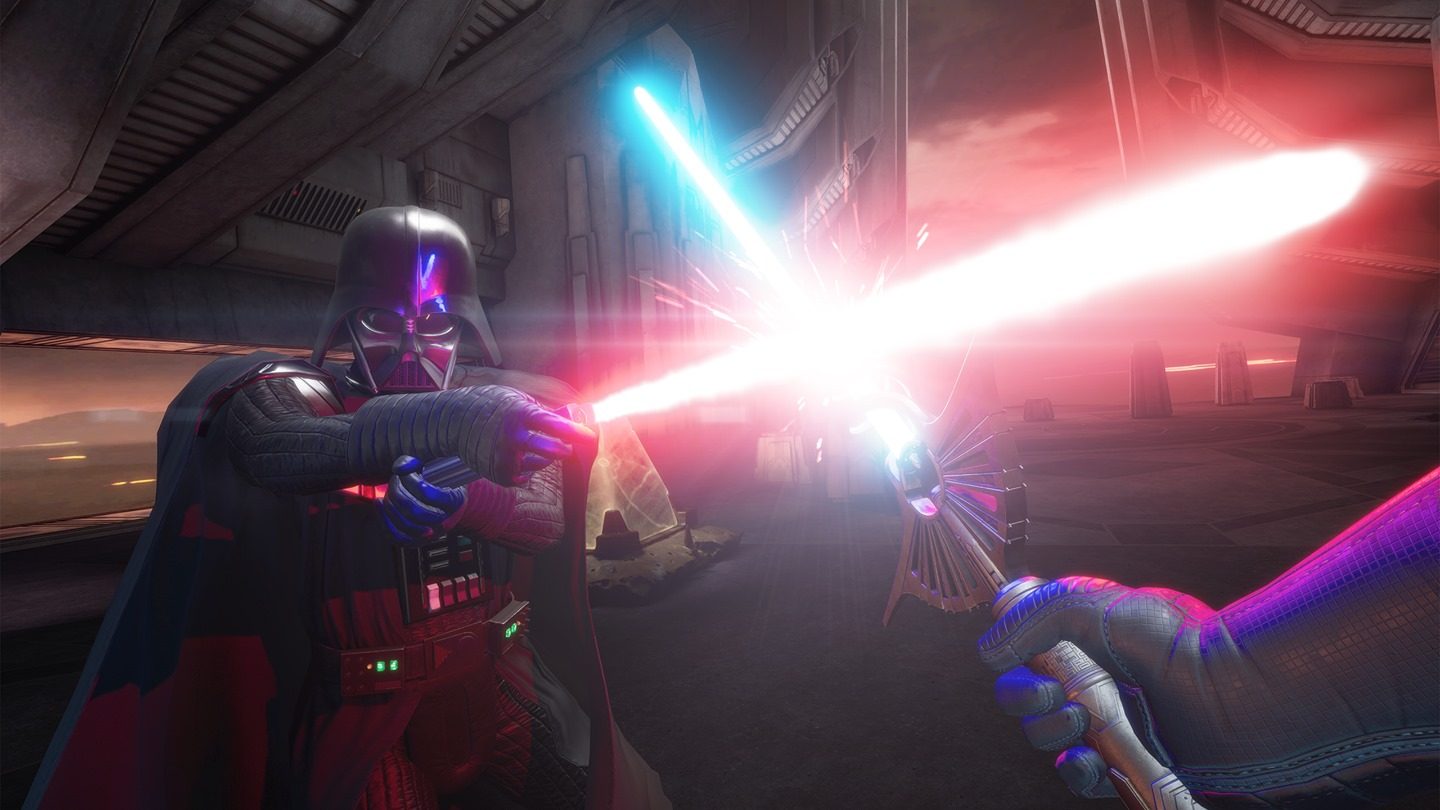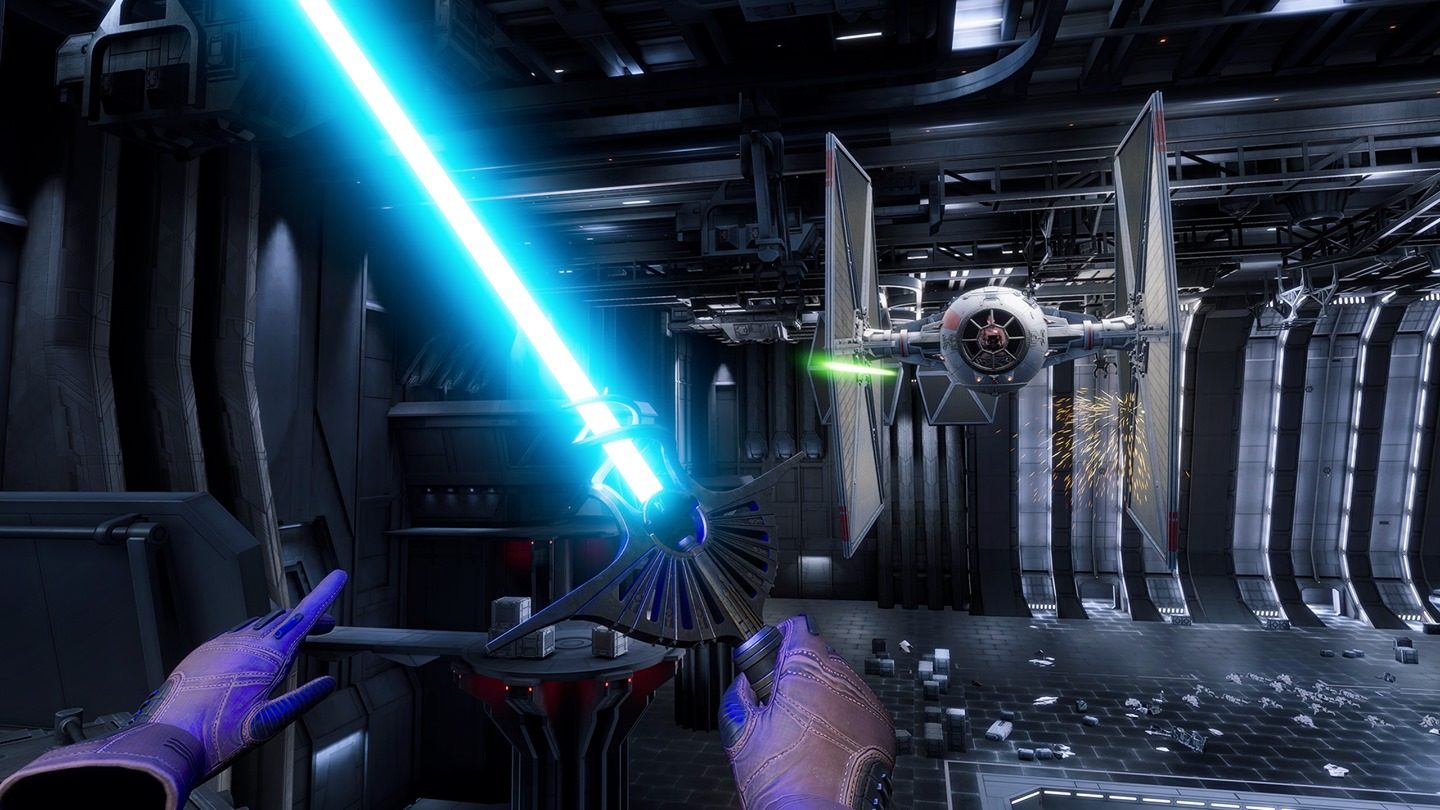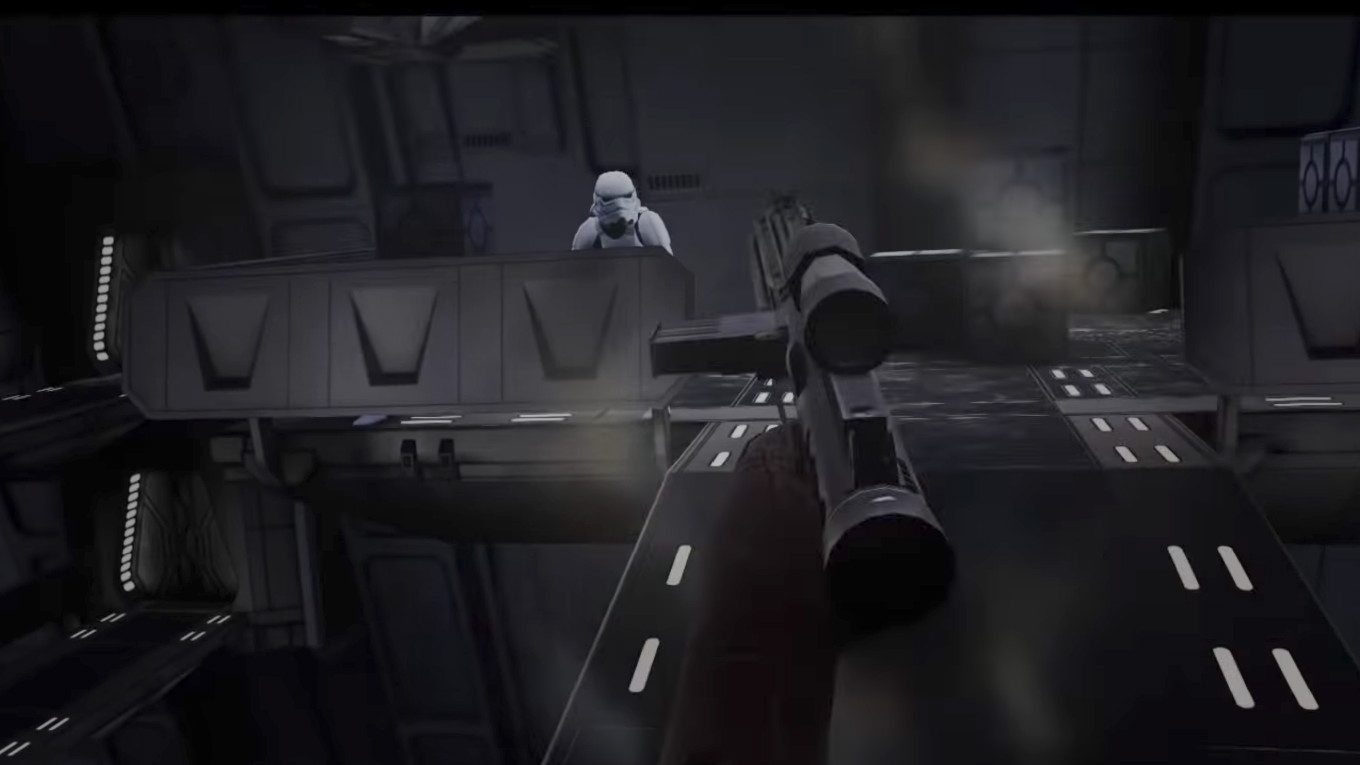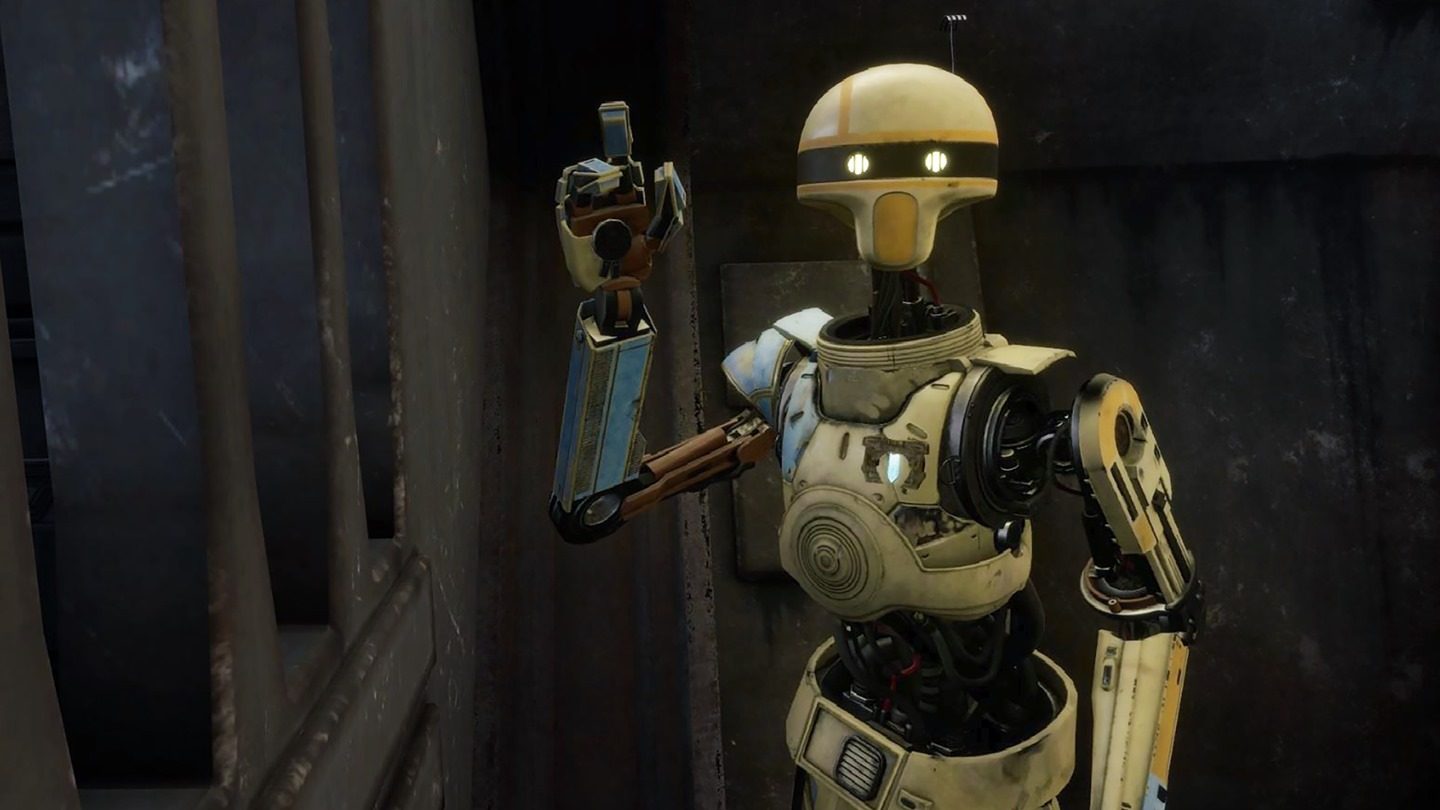
ILMxLAB has finally released the concluding episode of Vader Immortal: A Star Wars VR Series. While I’m sad to see the series go, which has exemplified high-quality VR production, I can’t help but feel a tad let down at what could have been a much grander, more adrenaline-filled climax.
Star Wars: Vader Immortal – Episode III Details:
Developer: ILMxLAB
Available On: Oculus (Rift, Quest)
Reviewed On: Rift
Release Date: November 21st, 2019
Price: $10
Gameplay
If you’ve gotten this far, I’m assuming you’ve already played both Episode I and Episode II of the story, but if not, suffice it to say that Lucas Films’ immersive media skunkworks ILMxLAB have put forth a highly polished cinematic experience that’s neither pure game, nor pure film. It’s somewhere in between, feeling more like an immersive theme park ride than a game or experience proper.
Ok. So what you’re about to read is a bit negative, but most of the positives from the previous episodes are present here too, like its incredible visuals, awesome voice acting, and immersive atmosphere that truly feels like stepping into the Star Wars universe. But the third episode does compound some things that make it less effective than I would have hoped.
I felt like there was a lot more pause for dialogue and scripted action in the third episode, something that stymied the flow of the adventure in a way it hadn’t encroached upon in episodes prior. That, and a few other gripes, shouldn’t put you off playing the third installment, or even starting from the ground up by purchasing the full trilogy, but I will say I was a bit disappointed that the climax didn’t have more weight than it did.

To me, this ‘choppiness’ is really a byproduct of the story’s chosen movement scheme. All three episodes lack a basic freedom of movement in favor of a node-based teleportation system which essentially keeps you waiting for dialogue cues so you can then continue on with the story. You’re led by a number of characters through tight, one-way paths that allow for little improvised exploration, taking momentary pauses for highly scripted action. While this is case throughout all three episodes, in the first two you’re still so far your true objective that you really only focus on the task at hand, be it fighting a rancor or learning a bit about the Dark Side from Mr. Vaderman. You let the story unfold before you because you’re not sure where it’s headed. You need someone to tell you where to go because you’re essentially the new kid on the block.
But as I started to see the light at the end of the tunnel, I was obstinately reminded that I would always be a captive to the next teleportation node, which only unlocks when the NPC fulfills their part of the exposition or action. I desperately wanted to run ahead into the fray, but instead I found myself constantly waiting for that node to appear. Instead of actually dashing through a fierce blaster battle with stormtroopers and fighting my way through, I was basically a sitting duck in a few different flavors of shooting galleries until an NPC magically allowed me to continue. Here, the third episode would have really benefited from some modicum of user choice when it came to locomotion and possibly even a slightly different pathway through the story, but I suppose that didn’t fit in the budget.

The third episode, which is about the same length as the other two, has a few new tricks up its sleeve, this time including conventional weapons such as grenades and blasters, the latter of which is interesting but a bit flawed in execution. Considering these weapons are this episode’s big addition, I really expected more.
Blasters are single-use items, which is fine, but you can’t really aim them effectively; there aren’t any iron sights, nor is the blaster’s scope actually functional, so you’ll just have to shoot by intuition alone (insert stormtrooper accuracy joke here). Adding insult to injury, you can’t actively teleport if both hands are occupied either, and your holsters can’t hold anything besides the single lightsaber in your possession, making your disposable blaster even less appealing as a tool.

Although the third episode compounds a few inherent flaws to the series, and possibly even robbed a bit of the fun from its most important battle, it still serves up a nice slice of action with a side order of free-form fun thanks to its ‘Lightsaber Dojo III’, which this time gives you the full range of abilities you learned throughout the series, which includes force grabbing, lightsaber dueling, blaster shooting, and even the chance to toss grenades. All three dojos offer up multiple hours of frenetic action on their own, which somewhat makes up for a less than stellar third episode.
I can’t say I’m the type to play wave-based games for long, no matter how frenetic and engaging the scenarios may be, but I still got plenty of mileage out of the third dojo, as it mashes in bits from the previous two, making it more of a well-rounded combat game. If I had to play only one dojo, this would be it, as it gives you the most freedom to take out a wide variety of air and land-based baddies. If anything, it makes the other two feel redundant, which isn’t actually a great thing. Had there been three different type of free-play sections apart from the actual story portion, it may have offered much needed variety outside of the same song and dance with a different set of bad guys and weapons to use.
Immersion
Despite feeling a bit letdown by the pacing, the world of Vader Immortal feels truly alive, which is a hard feat to accomplish when you’re given practically zero chance to explore on your own. I won’t harp on it too much, but player agency is a significant piece of feeling immersed in a game or experience. Giving the player a choice, which could be as simple as how to solve a problem or when to interact, can go a long way in feeling more grounded in the world.

Not to mention NPC interactions, which when done right can elevate an NPC from talking puppet to something worth protecting. There was really only one instance of this at the end, and it was pretty clumsy to say the least.
That said, graphics are again realized to awesome effect, bringing a level of visual fidelity and intention to the experience that feels more like a prescient peek into the ‘AAA’ VR games of tomorrow. It’s awesome.
Comfort
Without sounding like a broken record from the previous two episodes, teleporation is one of the most comfortable artificial locomotion methods out there, so newcomers and experienced VR users alike shouldn’t find issue with all three episodes.
You do however end up on moving vehicles at points, and provided you haven’t toggled it off in the settings, can be subject to camera shake and one more type of artificial locomotion that I won’t mention to preserve the storyline, which could be uncomfortable if it were more lengthy in duration.
Like the prior two, the third episode is also entirely playable whilst seated; both seated and standing modes can be toggled on and off in the settings.
The post ‘Star Wars Vader Immortal: Episode 3’ Review – All’s Well That Ends Well appeared first on Road to VR.
from Road to VR https://ift.tt/34nLRTo
via IFTTT
No comments:
Post a Comment